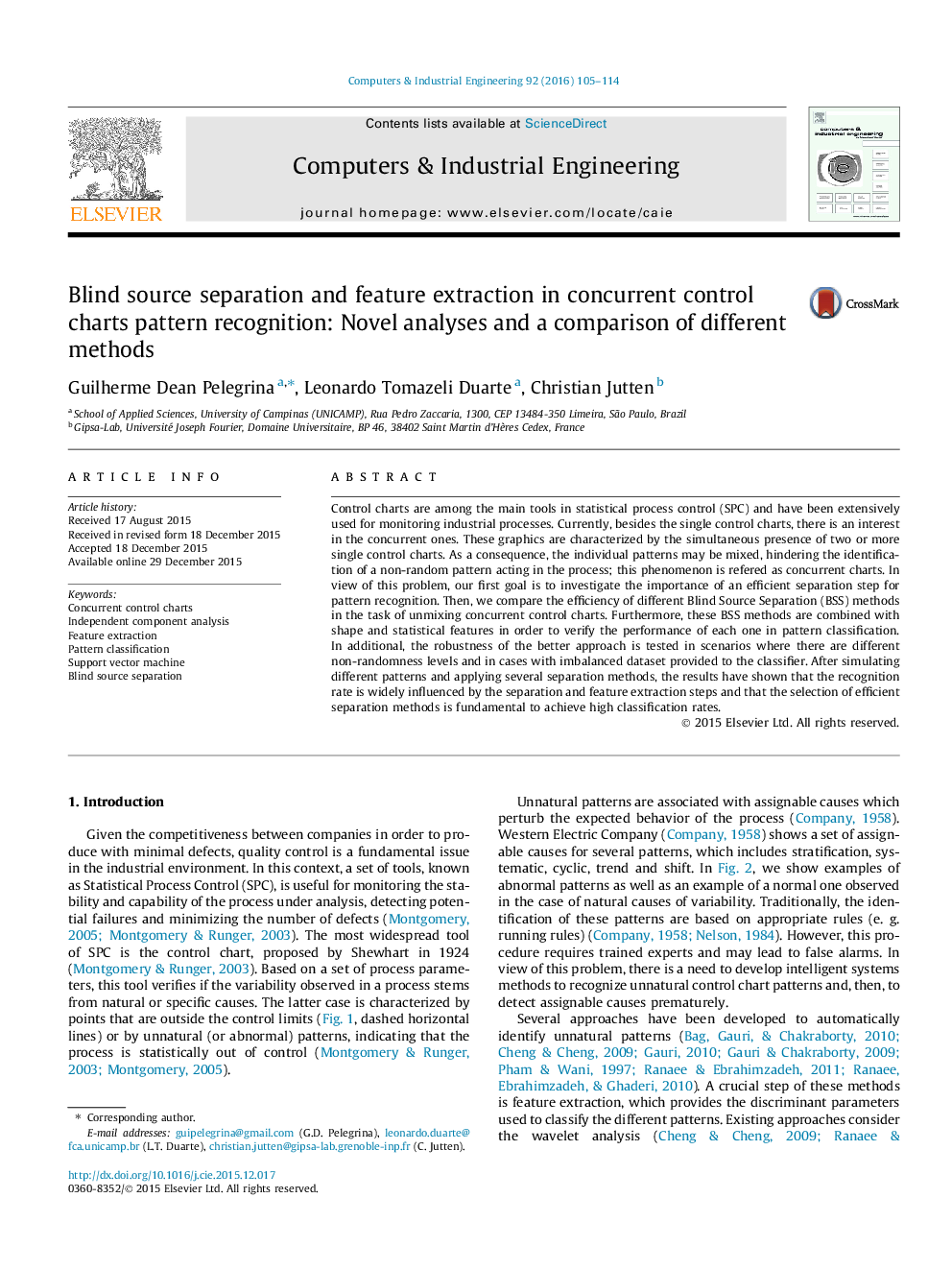| کد مقاله | کد نشریه | سال انتشار | مقاله انگلیسی | نسخه تمام متن |
|---|---|---|---|---|
| 1133301 | 1489074 | 2016 | 10 صفحه PDF | دانلود رایگان |
• Concurrent control chart pattern detection using blind source separation methods.
• Application of blind source separation methods combined with individual features.
• Extraction of parameters that provides an efficient discrimination of the patterns.
• Robustness of second-order statistics methods and individual features.
Control charts are among the main tools in statistical process control (SPC) and have been extensively used for monitoring industrial processes. Currently, besides the single control charts, there is an interest in the concurrent ones. These graphics are characterized by the simultaneous presence of two or more single control charts. As a consequence, the individual patterns may be mixed, hindering the identification of a non-random pattern acting in the process; this phenomenon is refered as concurrent charts. In view of this problem, our first goal is to investigate the importance of an efficient separation step for pattern recognition. Then, we compare the efficiency of different Blind Source Separation (BSS) methods in the task of unmixing concurrent control charts. Furthermore, these BSS methods are combined with shape and statistical features in order to verify the performance of each one in pattern classification. In additional, the robustness of the better approach is tested in scenarios where there are different non-randomness levels and in cases with imbalanced dataset provided to the classifier. After simulating different patterns and applying several separation methods, the results have shown that the recognition rate is widely influenced by the separation and feature extraction steps and that the selection of efficient separation methods is fundamental to achieve high classification rates.
Figure optionsDownload as PowerPoint slide
Journal: Computers & Industrial Engineering - Volume 92, February 2016, Pages 105–114
